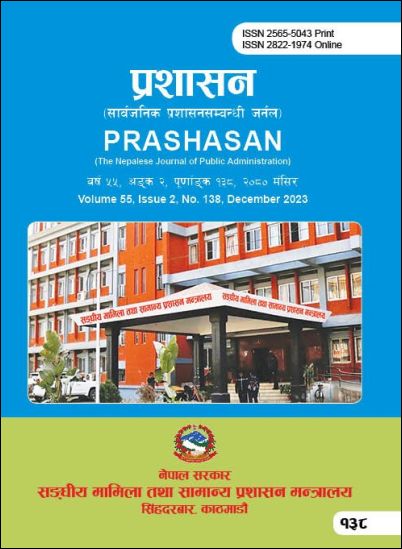Public Sector Corruption in Nepal: Causes and Consequences
DOI:
https://doi.org/10.3126/prashasan.v55i2.63542Keywords:
corruption, cause and consequence, public sectorAbstract
The research paper discusses corruption in Nepal's public sector, a significant challenge in the development agenda. The main objective of this study is to find the causes and consequences of corruption in the public sector. This study used primary and secondary data to determine the causes and consequences of corruption in Nepal. The results found that the political, court, and administration sectors are the most corruption-prone zones, losing the government's credibility. The leading causes of corruption are non-compliance with existing rules and regulations, lack of political commitment, transparency, accountability, consistency, and institutional weaknesses. Corruption reduces competitiveness and increases the cost of living, becoming a significant obstacle to economic growth, social development, and political stability. The government has taken various measures to combat corruption, including establishing anti-corruption bodies and laws. However, these measures have yet to be effective in curbing corruption, and there is a need for more significant reforms. The political leader, bureaucrats, civil society, and media should take responsibility for controlling corruption in the public sector of Nepal.
Downloads
Downloads
Published
How to Cite
Issue
Section
License
- The copyright of published materials of the journal remains with Ministry of Federal Affairs and General Administration.
- The published article cannot be reproduced or copied commercially by any person or institution but it can be used non-commercially for academic, research and training purpose providing proper citation is given.




